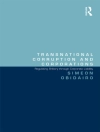Rising unemployment has become one of the most challenging problems for economic policy in many developed economies over the last fifteen years. In the second half of the 1970s and during the first half of the 1980s the labour market situation worsened dramatically. For the OECD area as a whole, unemployment as a percentage of the civilian labour force went up from 3.3 percent in 1974 to 8.1 percent in 1985. The increase in unemployment rates was even more pronounced for OECD-Europe, where it climbed from 3.3 percent to 10.5 percent in this period. Table 1.1: Unemployment Rates in some a ECD Countries, 1974-1989 yearly average 1989 1974{79 1974 1979 1985 1980/85 1985/89 USA 5, 6 5, 8 7, 2 5, 2 6, 8 8, 1 6, 2 UK 2, 2 4, 5 11, 6 6, 5 4, 2 10, 0 9, 7 3, 3 8, 3 7, 3 3, 5 6, 6 7, 9 FRG 2, 1 2, 4 1, 3 1, 5 2, 4 2, 2 Sweden 1, 6 1, 7 Austria 1, 1 1, 7 3, 6 3, 4 1, 5 3, 0 3, 5 Austria*) 1, 5 2, 0 4, 8 5, 0 1, 9 3, 6 5, 3 OECDEurope 3, 3 5, 7 10, 5 9, 0 4, 8 9, 1 10, 0 OECD 3, 7 5, 2 8, 1 6, 6 5, 0 7, 7 7, 5 *) national definition – see footnote 1). Source: OECD, 1989; BMSA.
Josef Christl
Unemployment/Vacancy Curve [PDF ebook]
Theoretical Foundation and Empirical Relevance
Unemployment/Vacancy Curve [PDF ebook]
Theoretical Foundation and Empirical Relevance
购买此电子书可免费获赠一本!
语言 英语 ● 格式 PDF ● ISBN 9783642503047 ● 出版者 Physica-Verlag HD ● 发布时间 2013 ● 下载 3 时 ● 货币 EUR ● ID 6325528 ● 复制保护 Adobe DRM
需要具备DRM功能的电子书阅读器












